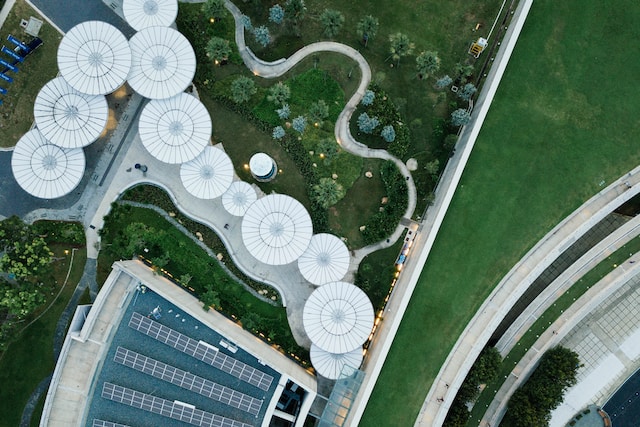As concerns about the environment and sustainability increase, more people are turning to sustainable landscaping techniques to create a beautiful, functional yard without harming the ecosystem. Integrated Pest Management (IPM) is one such technique that can help to manage pests and preserve the environment. In this article, we will discuss the concept of IPM and how it can be used for sustainable landscaping.
What is Integrated Pest Management (IPM)?
Integrated Pest Management (IPM) is a holistic approach to pest management that involves using a combination of methods to control pests. The goal of IPM is not to eliminate pests entirely but to manage them in a way that minimizes harm to the environment. IPM involves monitoring pests, identifying the root cause of the problem, and using a combination of techniques to control them. These techniques may include biological control, mechanical control, and chemical control, used in combination with non-chemical methods such as crop rotation, habitat manipulation, and the use of resistant plant varieties.
Benefits of Integrated Pest Management (IPM)
Using IPM for pest management has several benefits. First, it is an effective way to manage pests while reducing the need for harmful chemical pesticides. IPM also reduces the risk of developing resistance to pesticides, which can lead to an increased use of chemicals and further harm to the environment. Additionally, IPM can help to preserve natural predators and beneficial insects that can help to control pest populations naturally.
Steps for Implementing Integrated Pest Management (IPM)
Implementing IPM for sustainable landscaping requires a few key steps. These include:
Step 1: Monitoring
The first step in implementing IPM is to monitor the pest population in your yard. This involves regularly inspecting plants for signs of pests or damage. You can also use traps or sticky cards to monitor pest populations.
Step 2: Identification
Once you have identified a pest problem, the next step is to identify the specific pest species. This can help you to determine the best course of action for controlling the pest.
Step 3: Prevention
Prevention is a critical component of IPM. This involves taking steps to prevent pest problems before they occur, such as selecting pest-resistant plant varieties and using appropriate planting techniques.
Step 4: Control
If a pest problem does occur, the next step is to control the pest using a combination of methods. These may include biological control (such as releasing natural predators), mechanical control (such as hand-picking pests), and chemical control (using a targeted, low-toxicity pesticide).
Step 5: Evaluation
The final step in implementing IPM is to evaluate the effectiveness of the control methods used. This can help you to make adjustments to your pest management plan as needed.
Examples of Sustainable Landscaping Techniques Using IPM
There are many ways to use IPM for sustainable landscaping. Here are a few examples:
Companion Planting
Companion planting involves planting specific plants together to enhance their growth and deter pests. For example, planting marigolds around tomato plants can help to deter pests such as aphids.
Biological Control
Biological control involves using natural predators or parasites to control pest populations. For example, releasing ladybugs into a garden can help to control aphids.
Mechanical Control
Mechanical control involves physically removing pests from plants. For example, hand-picking caterpillars from a tomato plant can help to control their population.
Cultural Control
Cultural control involves using techniques such as crop rotation and habitat manipulation to prevent pest problems. For example, rotating crops can help to prevent the buildup of pests in the soil.
FAQs
1. What are the benefits of using IPM for pest management?
Using IPM for pest management has several
benefits, such as reducing the need for harmful chemical pesticides, preserving natural predators and beneficial insects, and minimizing harm to the environment.
2. Is IPM more expensive than traditional pest management methods?
IPM may require an initial investment in monitoring and preventative measures, but in the long run, it can be more cost-effective than traditional pest management methods. IPM reduces the need for repeated pesticide applications, which can be costly, and may also reduce the need for costly plant replacements due to pest damage.
3. Can IPM be used in large-scale agriculture?
Yes, IPM can be used in large-scale agriculture. In fact, it is often used in conjunction with other pest management methods to create a more sustainable and effective approach to pest management.
4. How can I learn more about implementing IPM in my landscaping?
There are many resources available for learning more about implementing IPM in landscaping. Local agricultural extension offices, gardening clubs, and sustainable landscaping organizations can provide information and guidance on sustainable landscaping techniques.
5. What are some common misconceptions about IPM?
A common misconception about IPM is that it is ineffective or complicated to implement. However, with proper planning and monitoring, IPM can be a highly effective and efficient way to manage pests while preserving the environment.
Conclusion
Integrated Pest Management (IPM) is a holistic approach to pest management that can be used for sustainable landscaping. By using a combination of techniques, including biological control, mechanical control, and chemical control, as well as preventative measures, IPM can effectively manage pests while minimizing harm to the environment. Sustainable landscaping techniques using IPM, such as companion planting and cultural control, can help to create a beautiful, functional yard without harming the ecosystem. By implementing IPM in landscaping, we can work towards a more sustainable future.












